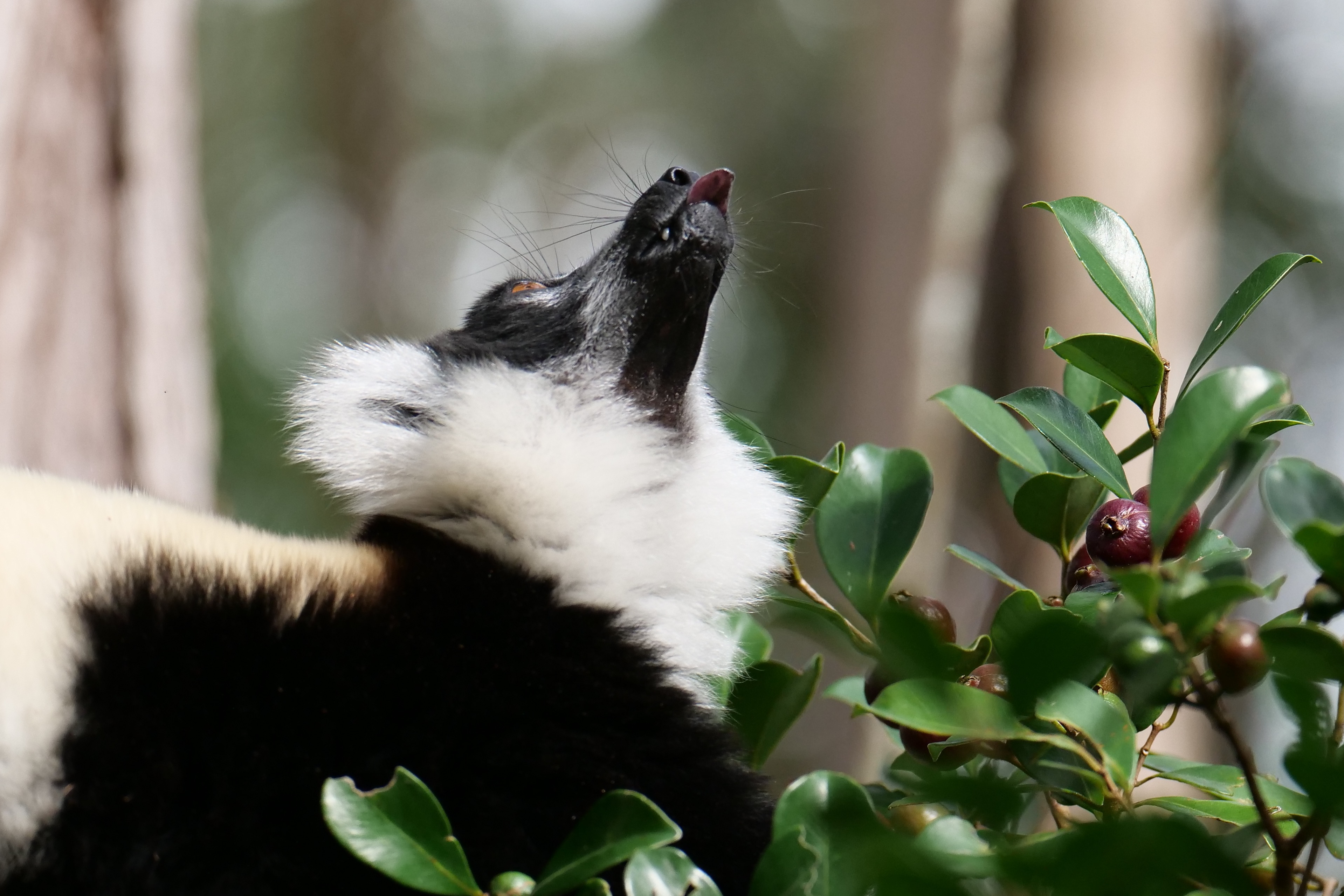A large, loud, and spectacularly agile rainforest-dwelling lemur, it is usually considered a single species, Varecia variegata.
Some argue that its three subspecies are so distinct that they should be classified as three species.
Alas, beyond argument is its/their status: critically endangered.
Their populations are small and fragmented.
Black-and-white Ruffed Lemurs are considered “difficult to see”, because they favour steep terrain and spend much of their time in the rainforest’s canopy.
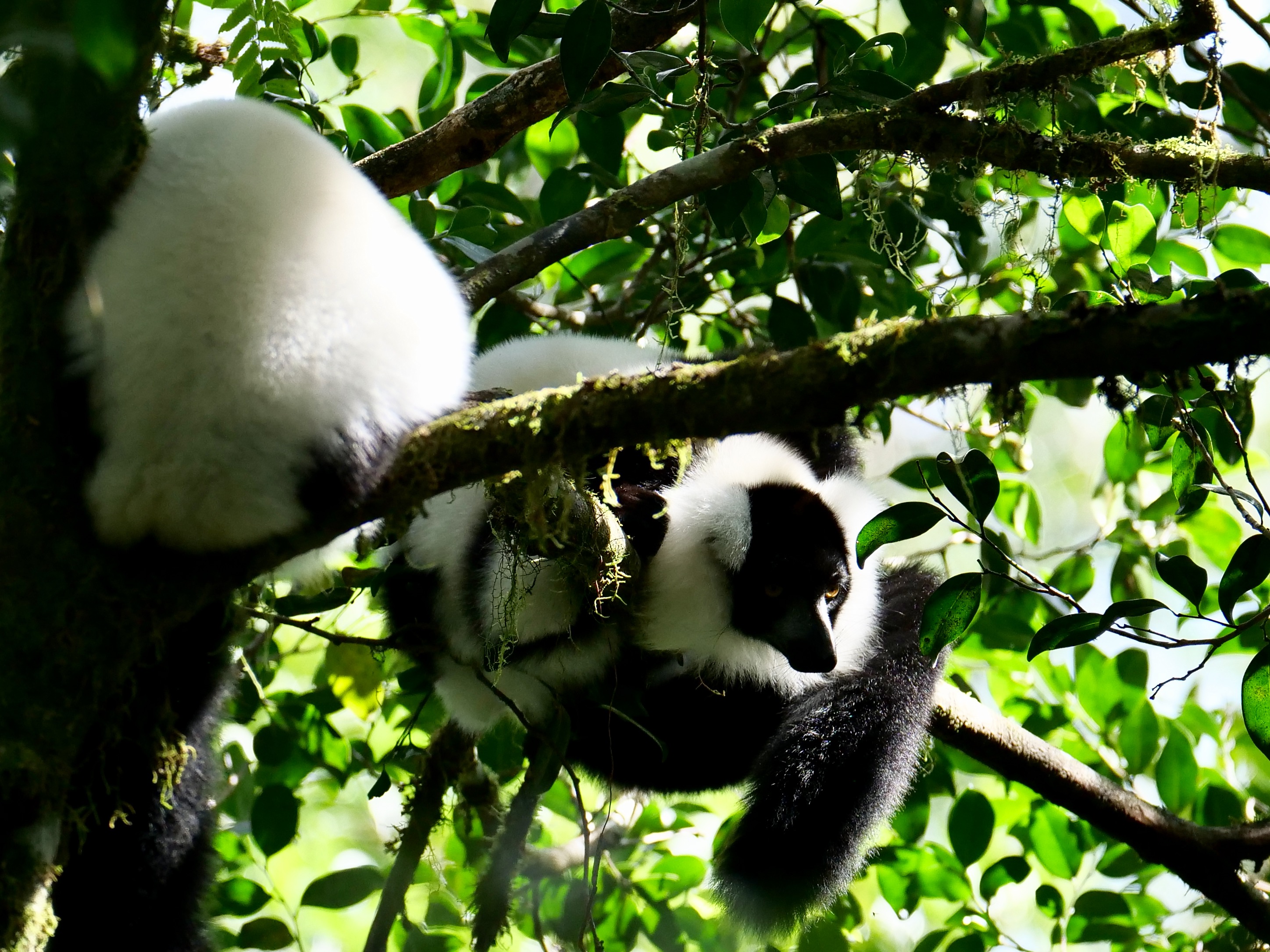
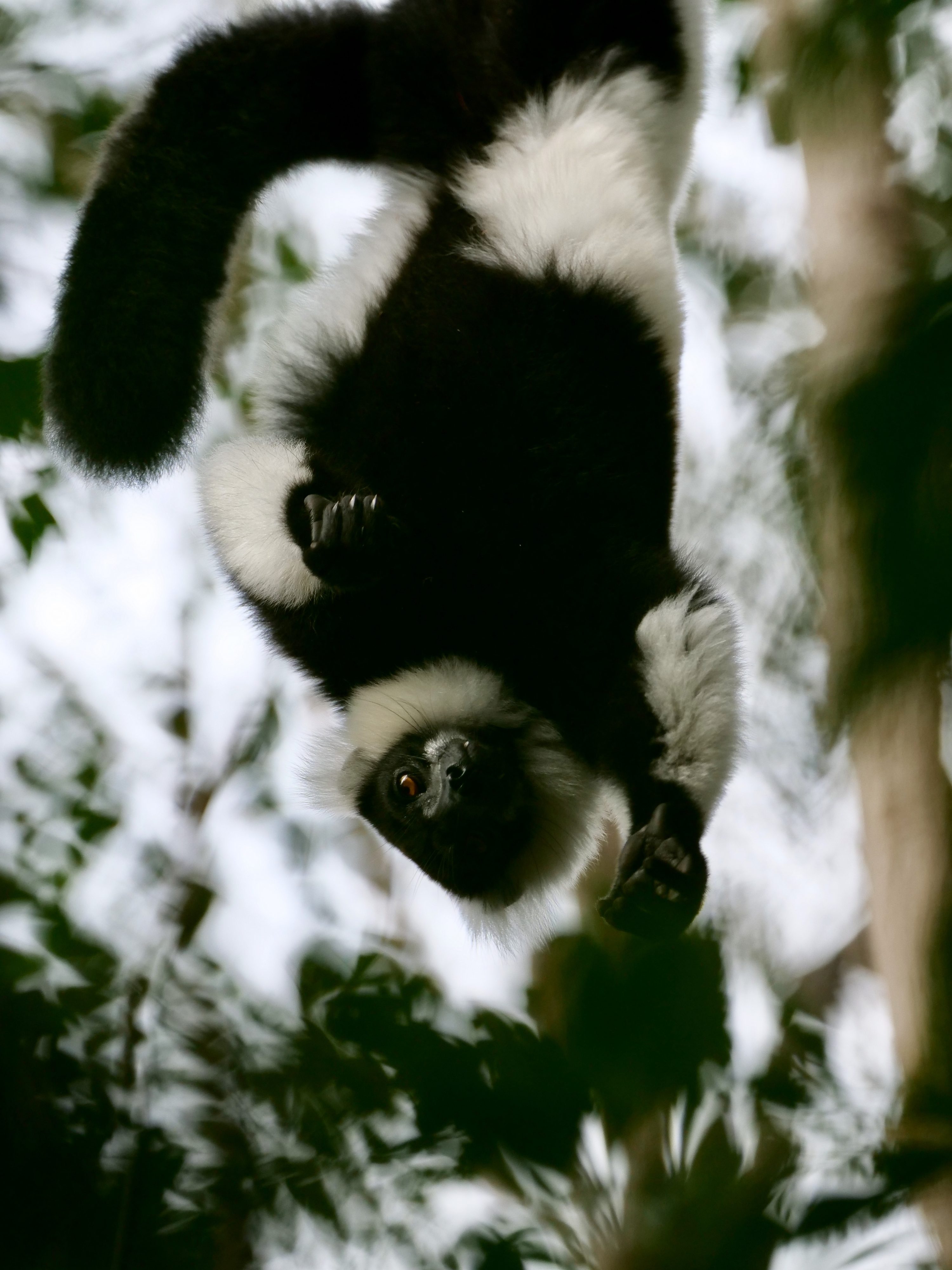
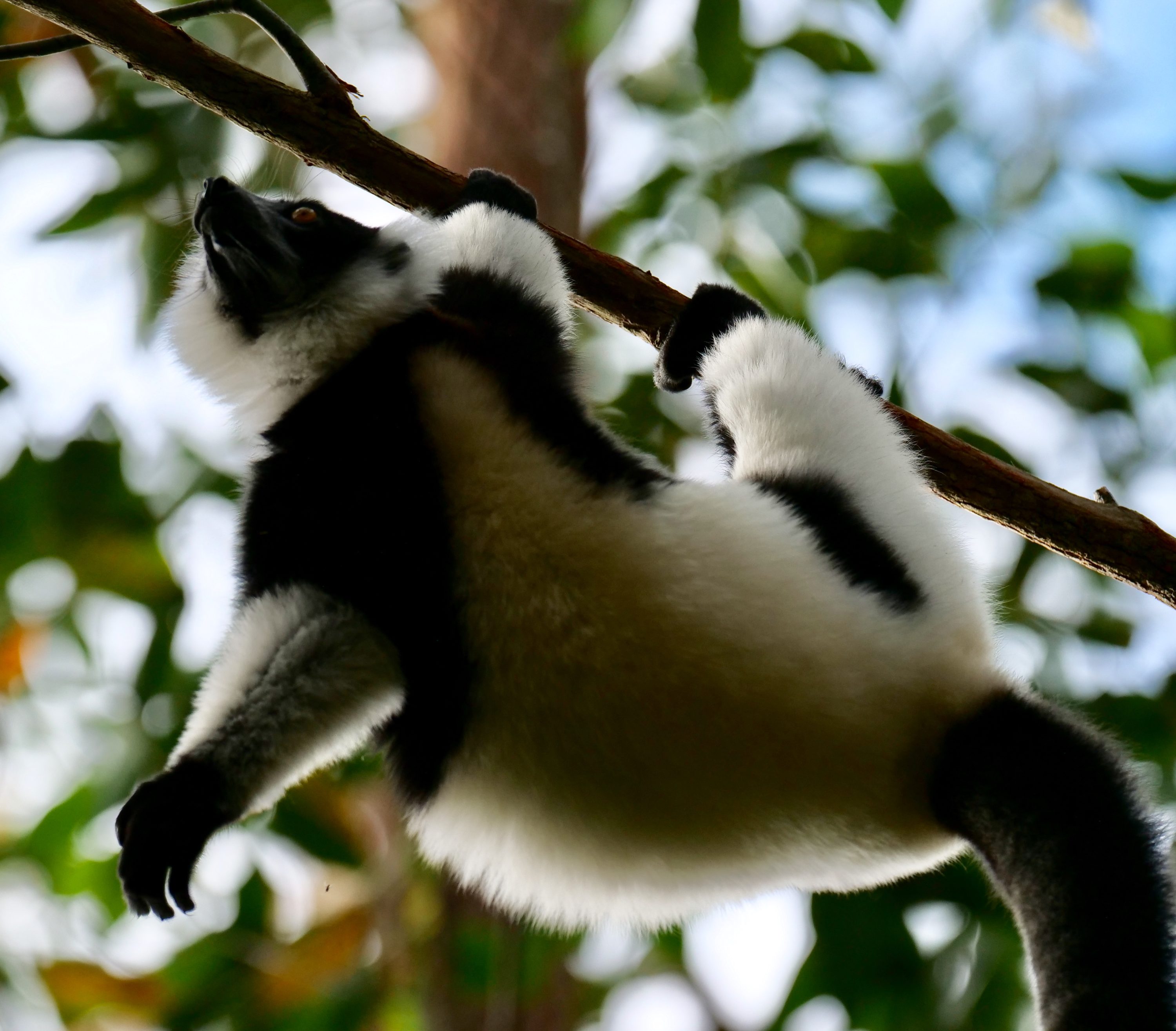
So, we were very lucky – in part, I suspect, because they are fruit eaters, and we and they happened upon some fruit which was not very high up.
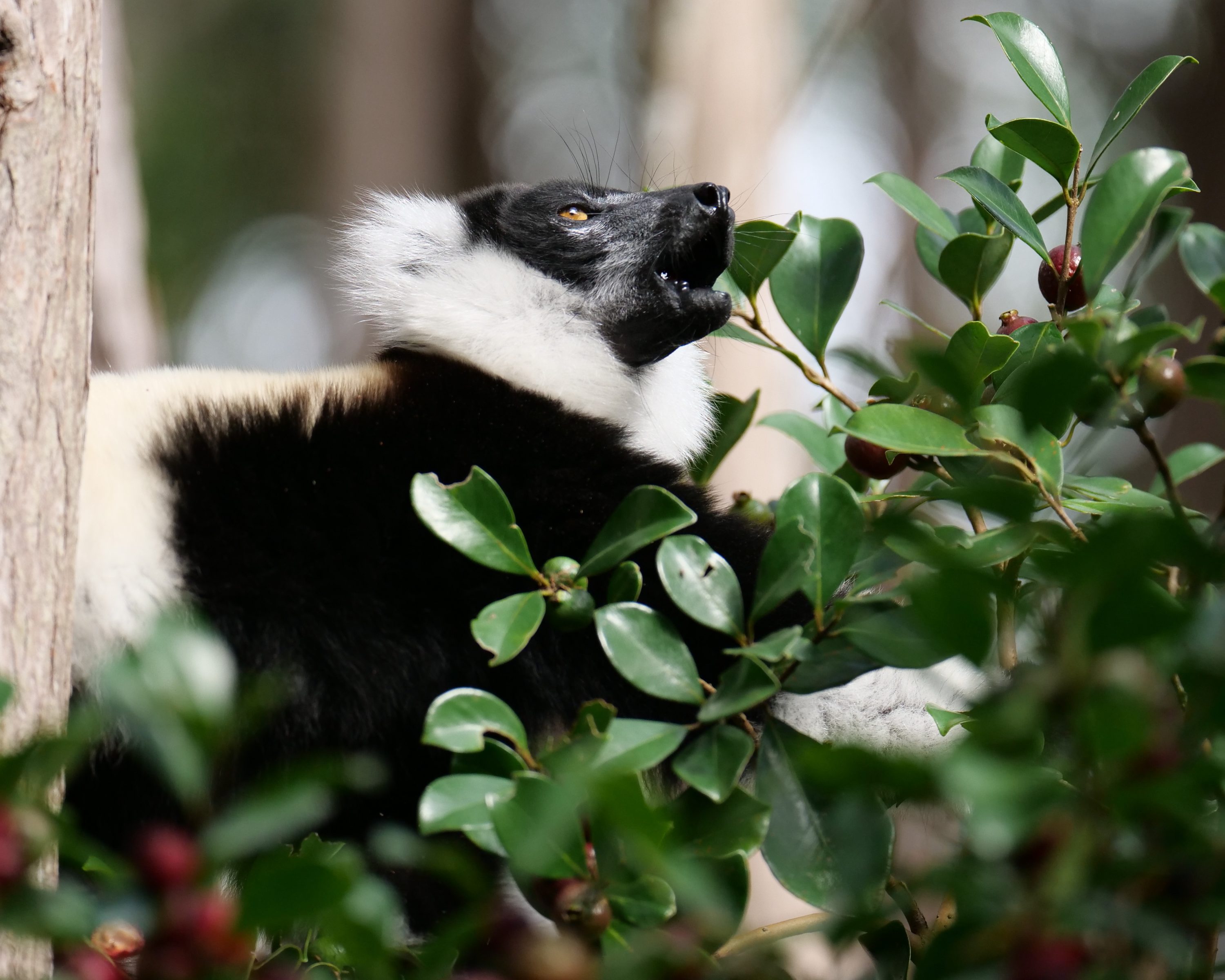
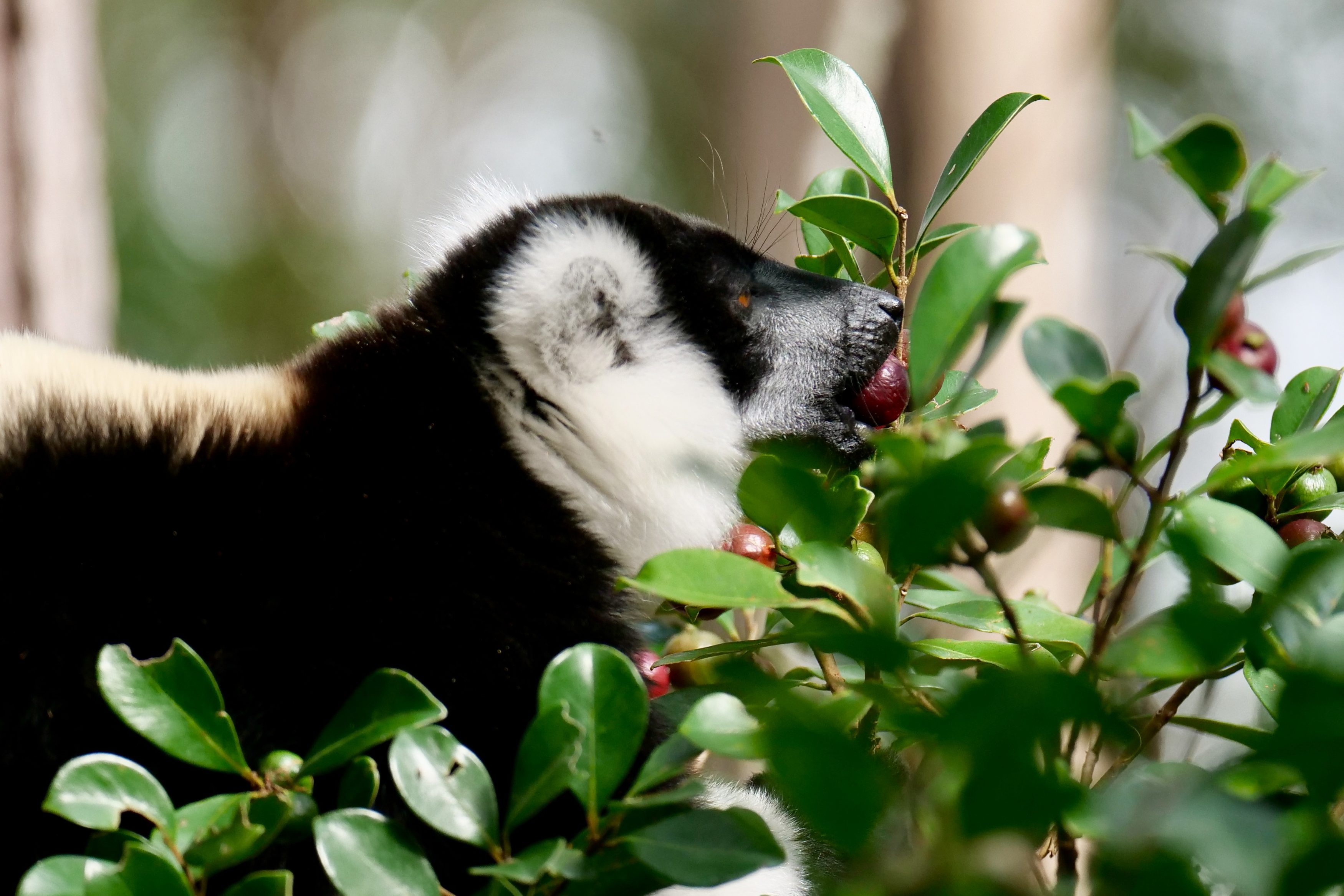
Although not the largest lemurs, they are the largest of the Lemuridae. (which is one of five Lemur “families”)
To my knowledge, this species’ breeding/nesting behaviour is singular among primates; Varecia variegata females give birth to twins, which they raise in a nest.
Discover more, here.
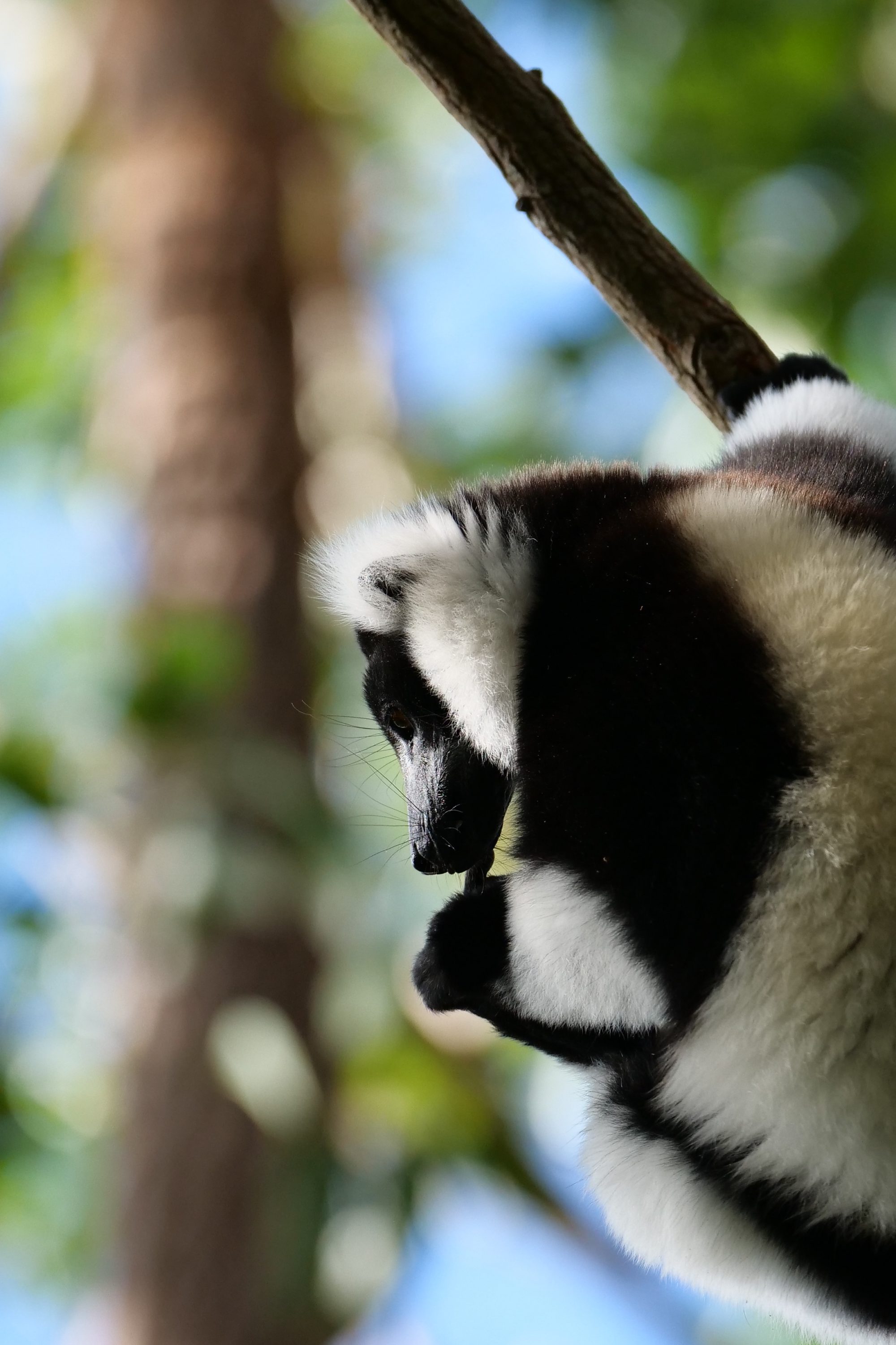
There are more Lemur episodes to come on Pelican Yoga, but the next few Madagascan posts will consider human life on this “eighth continent”.
